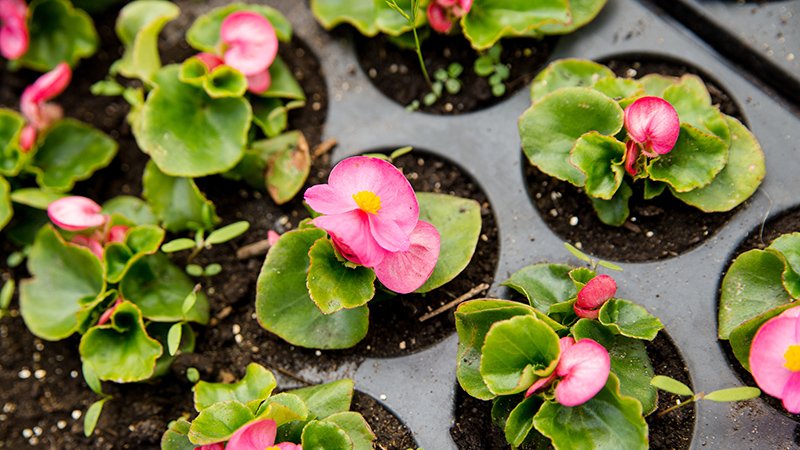USDA’s Next Floriculture Crops Summary Will (Finally) Represent the Entire Nation
 The U.S. floral industry will soon have comprehensive data on domestic floriculture production and sales in all 50 states for the first time, thanks to changes to the survey by the USDA’s National Agricultural Statistics Service (NASS).
The U.S. floral industry will soon have comprehensive data on domestic floriculture production and sales in all 50 states for the first time, thanks to changes to the survey by the USDA’s National Agricultural Statistics Service (NASS).
That survey, from which the Floriculture Crops Summary is compiled, will now include growers in all 50 states and data on more crops, as well as changes (improvements/enhancements) to how sales are reported. Those findings will be compiled in a report to be published in May 2022.
The changes are a win for the industry and reflect the advocacy work led by the Society of American Florists and its members on floriculture research funding.
“SAF’s continued work to draw attention to the report has helped ensure its publication and broadened its scope,” says SAF Senior Lobbyist Joe Bischoff. “This information is a vital benchmark for floral industry growers and to quantify the industry’s reach and impact on the economy.”
“We’ve been working on it for a long time,” says Marvin Miller, Ph. D., AAF, of Ball Horticulture Company, who began working closely with SAF and USDA/NASS in 1983 to reinstate, and later improve, the report. Miller, a long-time attendee of SAF’s Congressional Action Days, has been promoting the importance of the report on Capitol Hill at the event with other SAF members over many years.
SAF has a long history of advocating for the publication and expansion of the report, including lobbying for funding for NASS. Most recently, SAF helped secure $500,000 for NASS in the 2021 budget.
Lance Honig, Crops Branch Chief at the USDA/NASS, says the industry’s involvement and extra funding helped make the changes to the survey possible.
“This industry has been as supportive as any about seeing this program continue and expand,” Honig says. “That is certainly a factor. We are trying to find ways to do everything we can to expand, and certainly having more funding has helped.”
NASS has long been aware of the industry’s needs and wanted to start looking for ways to expand not just the floriculture report, but other commodity crop reports as well, Honig says. The agency decided to use the floriculture report as a pilot.
“The floriculture industry is fortunate to be on the front end of that,” Honig says.
The report shows trends in domestic production, informs sales projections, and is used in determining government agricultural policy as well as providing data for academic studies. It is the only source of annual data on annual bedding and garden plants, potted herbaceous perennials, potted flowering plants for indoor and patio use, foliage plants for indoor or patio use, cut flowers, cut cultivated greens, and propagative floriculture materials.
“Having the most comprehensive and robust report is really a valuable tool for making key business decisions,” says Camron King, CEO of Certified American Grown. He commended the USDA and NASS for responding to the industry’s needs.
The report will break out data individually for 28 states that meet a sales threshold. Those states are Alabama, Alaska, California, Connecticut, Colorado, Florida, Georgia, Hawaii, Illinois, Indiana, Iowa, Maryland, Massachusetts, Michigan, Minnesota, New Jersey, New York, North Carolina, Ohio, Oregon, Pennsylvania, South Carolina, Tennessee, Texas, Utah, Virginia, Washington, and Wisconsin. The data for the remaining 22 states — whose sales fell below threshold — will be grouped together.
Other changes include the reporting of sales as retail, wholesale and total sales. In the past non-wholesale prices were converted to the equivalent of wholesale prices.
The report will also include information about additional crops. The cut flower list, which already includes pompons, chrysanthemums, dahlias, gerbera daisies, gladioli, irises, orchids, peonies, roses, snapdragons, sunflowers, and tulips, will now also include lisianthus, aster, delphinium/larkspur, protea, and wax flowers.
Other crops new to the report will include (perennial) dianthus, lavender, salvia, and sedum; (potted flowering plants) begonia, hibiscus, hydrangea, and lilies; and (foliage) bromeliad, cacti and succulents, dracaena, ferns, and palms.
The survey will be mailed in December, and the 2021 Floriculture Crops Summary will be published May 25, 2022.








